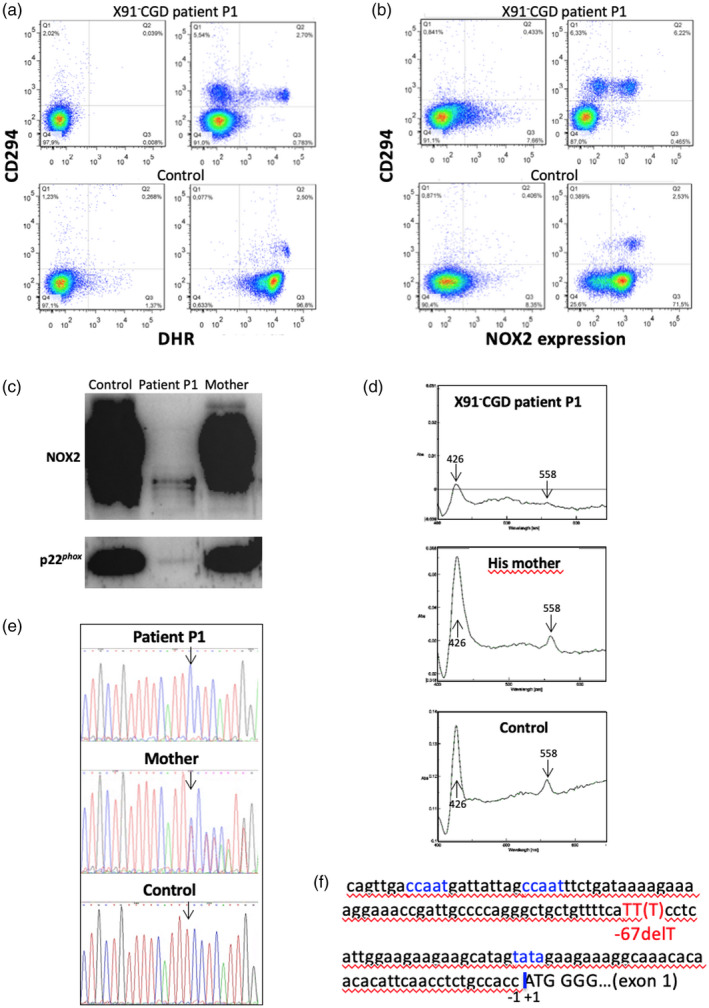Fig. 4.

Phenotypical and genotypical characterization of the X91− ‐chronic granulomatous disease (CGD) of patient P1 due to a new point mutation in the CYBB promoter. Flow cytometry dot‐plots of nicotinamide adenine dinucleotide phosphate (NADPH) oxidase 2 (NOX2) oxidase activity [dihydrorhodamine (DHR)] and CD294 expression (eosinophil marker) in neutrophils and eosinophils of granulocyte preparations from a healthy subject (bottom panels) and patient P1 (top panels) at rest (left panels) or after stimulation with phorbol myristate acetate (PMA) (right panels). Left panels correspond to dot‐plots of cells labeled with isotype control antibodies and loaded with DHR (a). Flow cytometry dot‐plots of NOX2 and CD294 expression (eosinophil marker) in neutrophils and eosinophils of granulocyte preparations from a healthy subject (bottom panels) and patient P1 (top panels) using 7D5 monoclonal antibody and anti‐CD294 antibody (right panels) compared to dot‐plots of isotype controls (left panels) (b). NOX2 and p22phox expression in patient P1 and his mother’s granulocytes by Western blot analysis. A faint NOX2 and p22phox expression are visible probably due to the presence of eosinophils in the granulocyte preparation (c). Cytochrome b 558 differential spectra of 1% Triton X100 soluble extract from patient P1 and his mother’s neutrophils (d). Thymidine deletion at position −67 detected in the CYBB promoter region of patient P1 and his mother as a carrier, compared to a healthy donor sequence (e). Schematic representation of part of the CYBB promoter region, with localization of the ‘CCAAT’ and ‘TATA’ boxes, the ATG starting codon and the point mutation described in panel (e) (f).
